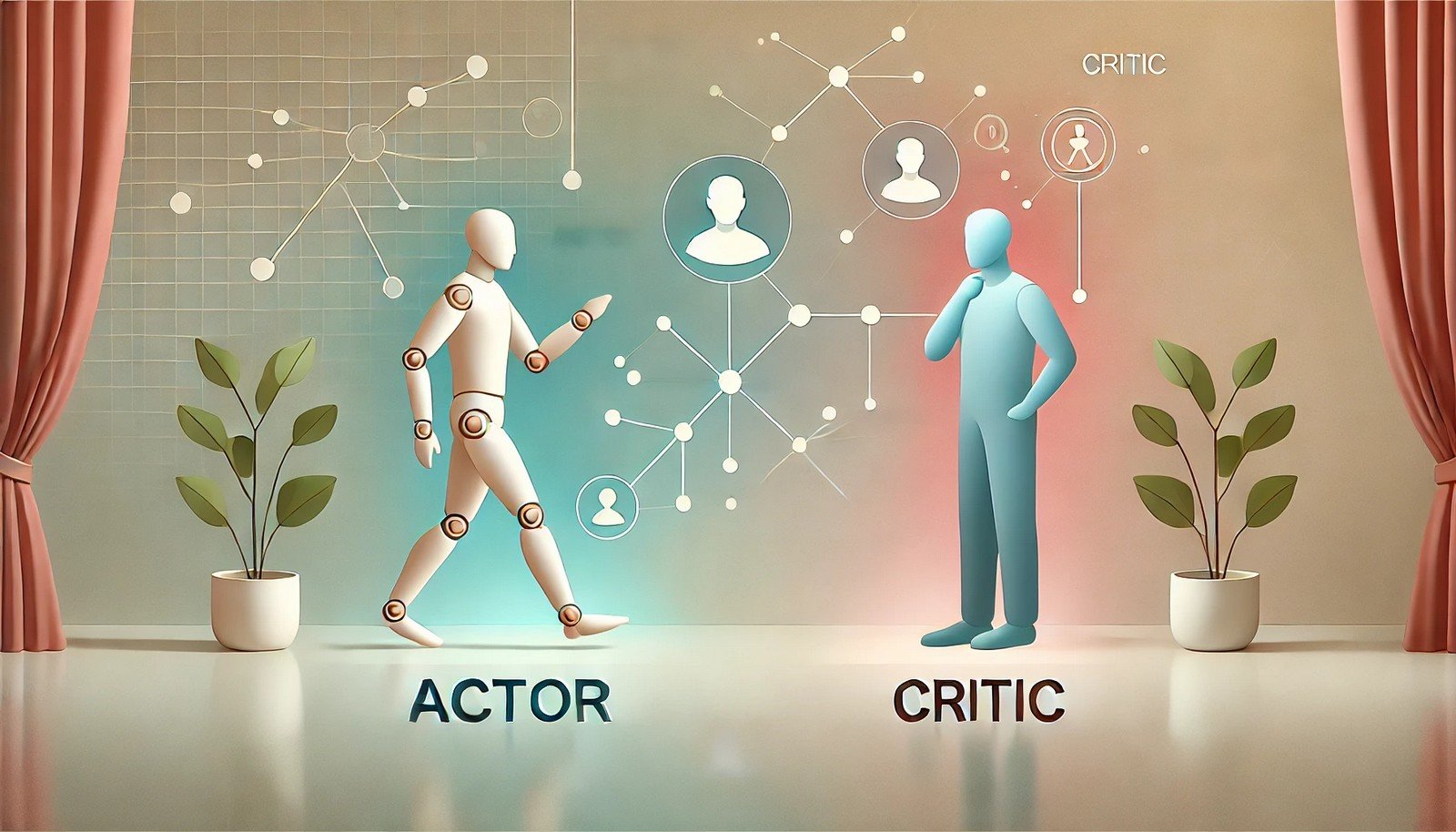Actor-Critic Models

Quick Navigation:
- Actor-Critic Models Definition
- Actor-Critic Models Explained Easy
- Actor-Critic Models Origin
- Actor-Critic Models Etymology
- Actor-Critic Models Usage Trends
- Actor-Critic Models Usage
- Actor-Critic Models Examples in Context
- Actor-Critic Models FAQ
- Actor-Critic Models Related Words
Actor-Critic Models Definition
Actor-Critic Models are a category of reinforcement learning models that combine value-based and policy-based approaches. In these models, the "Actor" selects actions based on a policy, while the "Critic" evaluates the action taken by estimating the value function. This dual approach helps optimize the policy, balancing immediate rewards and future benefits to improve performance in complex tasks. Actor-Critic models are particularly effective in continuous and dynamic environments, where traditional methods may struggle.
Actor-Critic Models Explained Easy
Imagine playing a video game where one friend (the "Actor") controls the character's moves, and another friend (the "Critic") gives feedback, saying "Good job!" or "Try something else!" based on how well each action worked. The Actor tries different actions, while the Critic guides them by pointing out what's working and what's not. Together, they get better at winning the game.
Actor-Critic Models Origin
Actor-Critic Models originated in reinforcement learning research as a solution to limitations in purely policy-based or value-based methods. By merging these approaches, researchers aimed to create more flexible models capable of handling complex, real-world decision-making scenarios. Over time, improvements in computational power have allowed Actor-Critic methods to be used in areas like robotics and gaming.
Actor-Critic Models Etymology
The term "Actor-Critic" reflects the roles within the model. The "Actor" is responsible for action selection, while the "Critic" evaluates those actions to guide the Actor toward more rewarding behaviors.
Actor-Critic Models Usage Trends
The popularity of Actor-Critic Models has surged with advancements in deep learning and AI. They are widely used in robotics, gaming, and real-time decision-making applications due to their adaptability. In recent years, methods like A3C (Asynchronous Advantage Actor-Critic) have further boosted their performance, making them a preferred choice in reinforcement learning.
Actor-Critic Models Usage
- Formal/Technical Tagging:
- Reinforcement Learning
- Machine Learning
- Deep Learning - Typical Collocations:
- "Actor-Critic reinforcement learning"
- "A3C model"
- "policy optimization"
- "value function estimation"
Actor-Critic Models Examples in Context
- In robotics, Actor-Critic Models help robots decide on optimal movements by balancing exploration and exploitation.
- Game AI uses Actor-Critic Models to learn winning strategies by assessing which moves yield the highest rewards.
- Autonomous vehicles apply Actor-Critic methods to make real-time driving decisions based on continuous environmental feedback.
Actor-Critic Models FAQ
- What is an Actor-Critic Model?
An Actor-Critic Model is a reinforcement learning model combining policy-based and value-based methods to improve action selection. - How does an Actor-Critic Model work?
It has two components: the Actor selects actions, and the Critic evaluates them, guiding the Actor to maximize rewards. - Why is it called Actor-Critic?
"Actor" chooses actions, and "Critic" provides feedback on those actions. - Where are Actor-Critic Models used?
They are used in robotics, gaming AI, and self-driving cars for decision-making in dynamic environments. - What are the benefits of Actor-Critic Models?
They effectively balance exploration and exploitation, improving learning in complex tasks. - How does A3C relate to Actor-Critic?
A3C is a variant of Actor-Critic Models that allows parallel training, enhancing learning speed. - Is Actor-Critic Model supervised learning?
No, it’s reinforcement learning, where actions are evaluated based on rewards instead of labeled data. - Can Actor-Critic Models be applied in healthcare?
Yes, they are explored in personalized treatment planning, optimizing decisions over time. - What challenges do Actor-Critic Models face?
They can be computationally intensive and require fine-tuning for stable learning. - What’s the difference between Actor-Critic and Q-learning?
Actor-Critic has two components for policy and value, while Q-learning focuses solely on estimating value.
Actor-Critic Models Related Words
- Categories/Topics:
- Reinforcement Learning
- Machine Learning
- Artificial Intelligence
- Deep Learning
Did you know?
Actor-Critic Models have been used in some of the most advanced video game AI systems. These models enable characters to make real-time decisions based on ongoing feedback, creating challenging and dynamic gaming experiences for players.
PicDictionary.com is an online dictionary in pictures. If you have questions or suggestions, please reach out to us on WhatsApp or Twitter.Authors | Arjun Vishnu | @ArjunAndVishnu

I am Vishnu. I like AI, Linux, Single Board Computers, and Cloud Computing. I create the web & video content, and I also write for popular websites.
My younger brother, Arjun handles image & video editing. Together, we run a YouTube Channel that's focused on reviewing gadgets and explaining technology.



Comments powered by CComment